We've been working hard these past few weeks. With the introduction of chalk pastels, we came across many challenges. Firstly, chalk is messy. Secondly, it gets all over our fingers and is hard to remove. Thirdly, blending and mixing colors is hard...why does everything turn brown? But, it's fun messy, and we can clean our hands, and we're learning to blend and mix without making muddy colors. We've created all sorts of colors and tones with our hands. Some students opted for the glove, but many found that directly touching the pastels they could gain more confidence by using their fingers to directly blend and mix. The messy part soon became just a nuisance and less of a challenge.
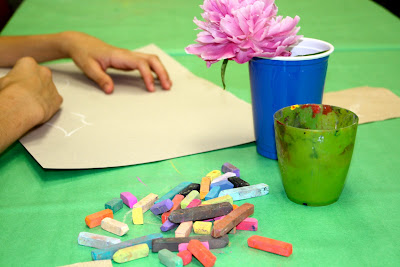 |
| Sketching and observing. |
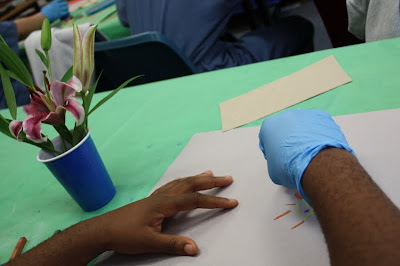 |
| The gloved one. |
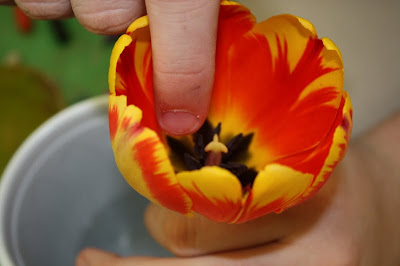 |
| Student pointing to the inside of a tulip. |
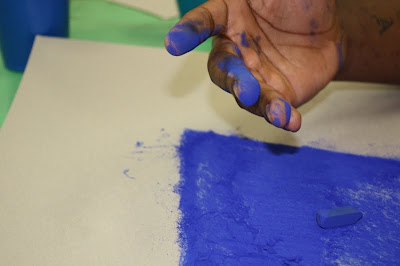 |
| Without a glove, things get a little tricky. |
Day one: Color Mixing. Many students created small abstract pieces to see what shapes and lines they could make. It was a good way to practice and not feel intimidated by a new media. Chalk pastels can be quite tricky to use, but with practice you can see amazing results. Just keep scrolling down to see how students have progressed in just a few days.
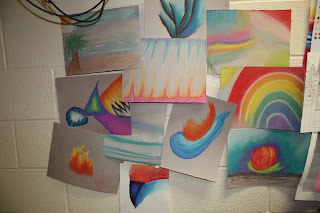 |
| Abstract designs, using pastels for the first time. |
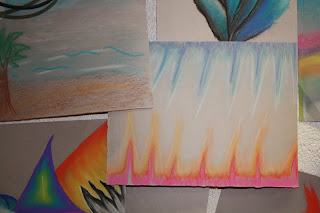 |
| Close up of blending. |
 |
| Students worked from dark to light to prevent muddiness. |
Day two: Interpretation of a photo. Students used black and white flower images and chalk to create their version of the photograph. Their drawings show a variety of tones, color choices, views and moods.
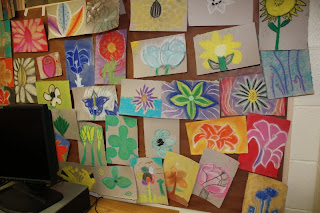 |
| Chalk pastel drawings of photographed flowers. |
Day three: Create a point a view and mood through direct observation. Students observed REAL flowers to create larger than life drawings of flowers. By using Georgia O'Keeffe reproductions as a resource, students were able to understand how a small object can be made meaningful by using color, tones, and an interesting perspective. These works are still in progress, but I think you can see how students have been able to create a piece that reflects an approach to showing off a small object in a big light.
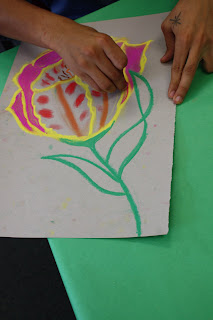 |
| Artist is carefully blocking in dark tones first, before blending. |
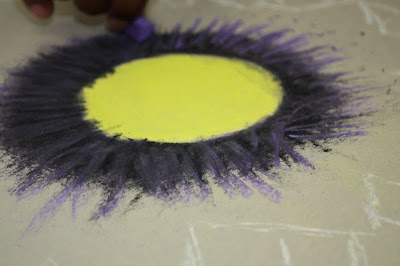 |
| Artists can create textures that appear light and wispy just by the movement of the chalk. |
 |
| Student beginning to blend and shade. |
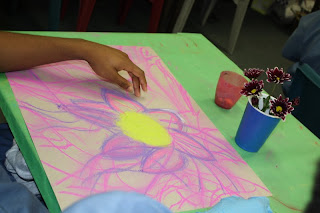 |
| Being expressive when drawing is important. |




















No comments:
Post a Comment